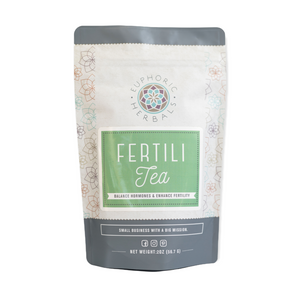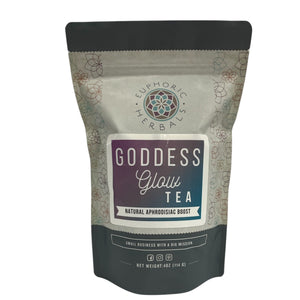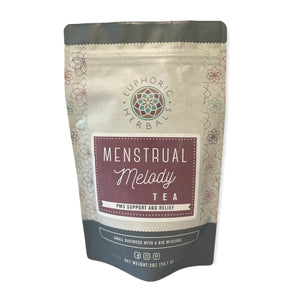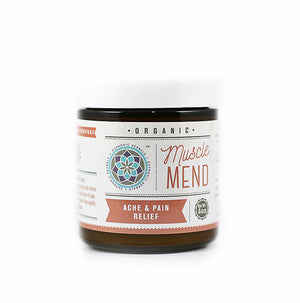Blue cohosh is a unique plant with a long history of use in Native American medicine. It was primarily considered a women's herb and uterine tonic, though it has other health benefits as well.
Although they share a similar name, blue cohosh should not be confused with black cohosh, which is a completely different plant. Both do have uses for women's health and are sometimes combined in herbal formulas, but each has different properties.
Here's more about the benefits of blue cohosh, how it's used, and precautions you need to be aware of.
What Is Blue Cohosh?
Blue cohosh (Caulophyllum thalictroides) also goes by names like squaw root, papoose root, and blue ginseng. It's a perennial plant native to parts of the eastern U.S. and Canada and belongs to the same plant family as barberry and goldenseal.
Cohosh comes from the Algonquin Indian word for "rough," which refers to the roots of the plant. The stem of the plant has a bluish color to it and blooms with yellow-green flowers. Blue cohosh also produces small, blue berries that are poisonous.
The roots of the blue cohosh plant are the part that's used medicinally. Typically, the roots are harvested at the end of summer. While the root can be used fresh, you'll typically find it in dried or powdered form as a supplement.
Blue cohosh roots contain alkaloids, tannins, saponins, phytosterols, and other active plant compounds.
Health Benefits of Blue Cohosh
Aids and Induces Labor
Blue cohosh was once considered one of the best herbs to induce labor during natural childbirth. It contains compounds that stimulate uterine contractions and yet also has a relaxing effect that can help relieve the pain of pregnancy. (1)
Preparations of blue cohosh were often used for this purpose by Native Americans and then by European settlers soon after.
Blue cohosh is considered to be a general uterine tonic that stimulates blood flow to the pelvic region. Though not to be taken during pregnancy, it's still used by midwives in modern times to help women who want to have a natural childbirth. (1)
Please note that blue cohosh should only be taken during pregnancy for the purpose of inducing labor and only under professional medical supervision. It can cause miscarriage/abortion if used prior to labor.

Relieves Pain and Cramping
The benefits of blue cohosh can continue for women postpartum. It has antispasmodic and anti-inflammatory properties that help relieve uterus pain and cramping after giving birth. (2)(3)
Traditionally used to help speed recovery after labor, blue cohosh also helps to decrease the intensity of after-birth contractions of the uterus. (4)
Often, blue cohosh will be combined with other herbs that are healing postpartum to create a balanced herbal formula. It works well with herbs like red raspberry leaf, which provides much needed nourishment to your body, and cramp bark, which (true to its name) also helps reduce cramping.
You can try blue cohosh for postpartum relief in this holistic Afterbirth Ease tea.
Helps Painful or Absent Periods
Continuing its trend of being a women's herb, blue cohosh has also traditionally been used for both painful and delayed or absent periods. (1)
Blue cohosh root is considered an emmenagogue, which means an herb that stimulates blood flow to the pelvic region and brings on menstruation. (5) Its antispasmodic properties also help to relieve cramping and painful periods.
Blue cohosh can be combined with other herbs like black cohosh to have more of an effect for uncomfortable or delayed menstruation.
Other Benefits of Blue Cohosh
There have not been many research studies done on the benefits of blue cohosh root, but it does have other traditional uses.
With its anti-inflammatory properties, blue cohosh was once used to treat conditions like arthritis, rheumatism, and gout. Its antispasmodic effects were used to calm asthma, coughs, and stomach cramps.
Though not confirmed, blue cohosh may have an estrogen-like effect that can help balance hormone-related issues. It has been used in traditional medicine to help relieve symptoms of menopause. (3)
Other uses include as a laxative to treat constipation and as a diuretic.
Using Blue Cohosh
The use of blue cohosh root has dropped significantly, but you can still find it sold as a dried herb or available in supplement form as an extract and capsules.
The dried root can be made into a tincture or tea. You may wish to combine other herbs with blue cohosh if drinking as a tea, since it has a bitter taste.
You'll also find blue cohosh as part of herbal preparations for postpartum pain and menstrual relief blends.
Precautions
Blue cohosh is an herb that comes with several precautions.
Because it stimulates the uterus, blue cohosh should not be taken at all during pregnancy. It can be taken during the last week to induce labor but only under the care and supervision of a qualified herbalist and/or medical professional. Do not self-prescribe blue cohosh during pregnancy.
There is also research that suggests certain compounds in blue cohosh could interfere with the development of the fetus and possibly cause birth defects when taken during pregnancy, which further confirms the fact that you should avoid it if you are pregnant.
There are possible side effects when taking blue cohosh, especially in large amounts. These include diarrhea, irritation to the digestive tract, chest pain, and high blood pressure. Because it can raise blood pressure, blue cohosh should be avoided by those who already have high blood pressure or heart problems.
Blue cohosh can have an effect on hormones and should be avoided by those with hormone-sensitive conditions, including certain cancers.
Rediscovering Blue Cohosh
The benefits of blue cohosh have become slightly forgotten over the years, but is an herb worth rediscovering.
Although it certainly shouldn't be taken during pregnancy, blude cohosh can still be very supportive postpartum and for other women's health issues. It supports uterine health and can relieve pain and cramping.
This traditional Native American remedy is still beneficial and useful in modern times.














































































































































































